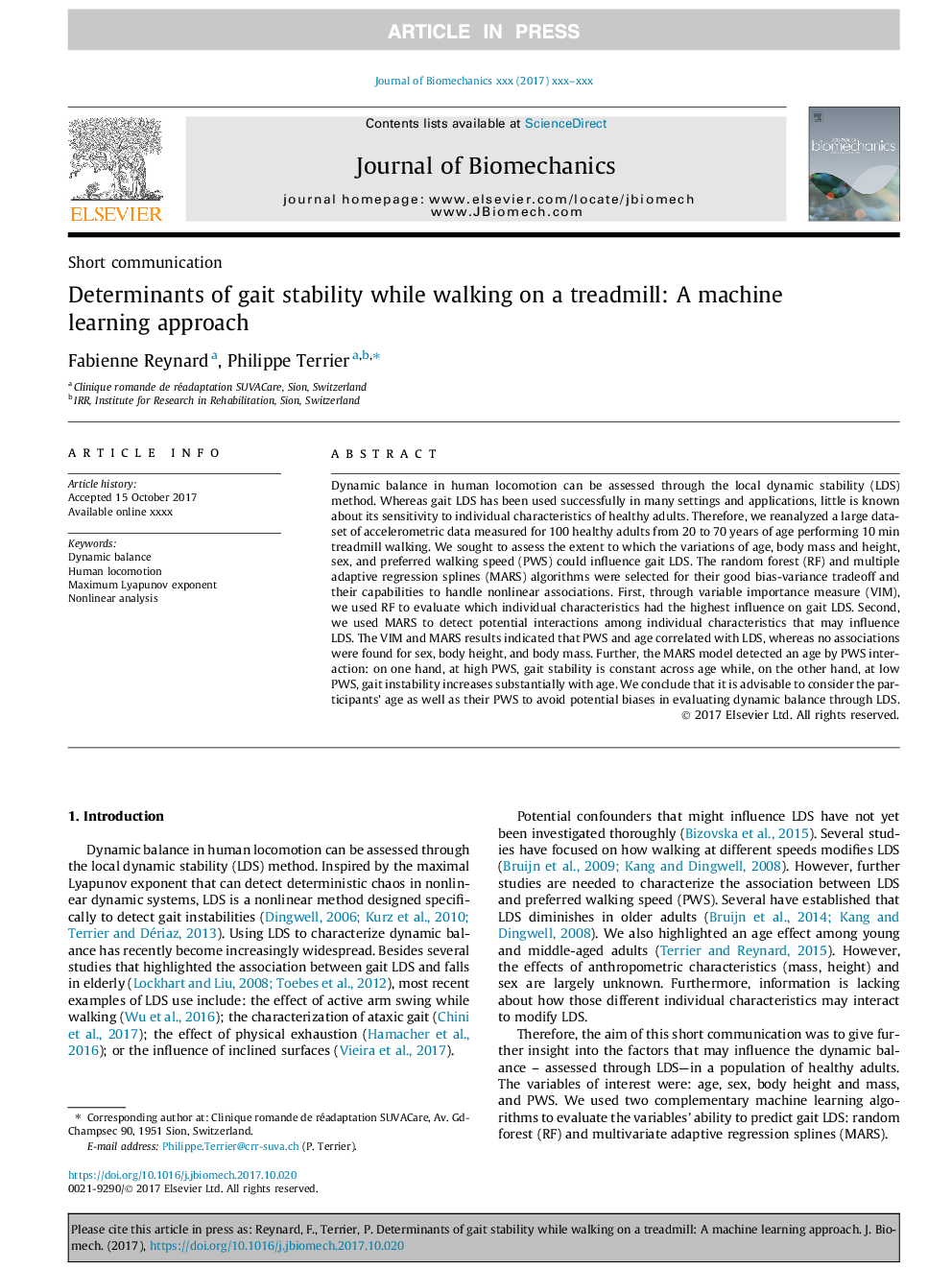| Article ID | Journal | Published Year | Pages | File Type |
|---|---|---|---|---|
| 7237092 | Journal of Biomechanics | 2017 | 4 Pages |
Abstract
Dynamic balance in human locomotion can be assessed through the local dynamic stability (LDS) method. Whereas gait LDS has been used successfully in many settings and applications, little is known about its sensitivity to individual characteristics of healthy adults. Therefore, we reanalyzed a large dataset of accelerometric data measured for 100 healthy adults from 20 to 70â¯years of age performing 10â¯min treadmill walking. We sought to assess the extent to which the variations of age, body mass and height, sex, and preferred walking speed (PWS) could influence gait LDS. The random forest (RF) and multiple adaptive regression splines (MARS) algorithms were selected for their good bias-variance tradeoff and their capabilities to handle nonlinear associations. First, through variable importance measure (VIM), we used RF to evaluate which individual characteristics had the highest influence on gait LDS. Second, we used MARS to detect potential interactions among individual characteristics that may influence LDS. The VIM and MARS results indicated that PWS and age correlated with LDS, whereas no associations were found for sex, body height, and body mass. Further, the MARS model detected an age by PWS interaction: on one hand, at high PWS, gait stability is constant across age while, on the other hand, at low PWS, gait instability increases substantially with age. We conclude that it is advisable to consider the participants' age as well as their PWS to avoid potential biases in evaluating dynamic balance through LDS.
Related Topics
Physical Sciences and Engineering
Engineering
Biomedical Engineering
Authors
Fabienne Reynard, Philippe Terrier,
